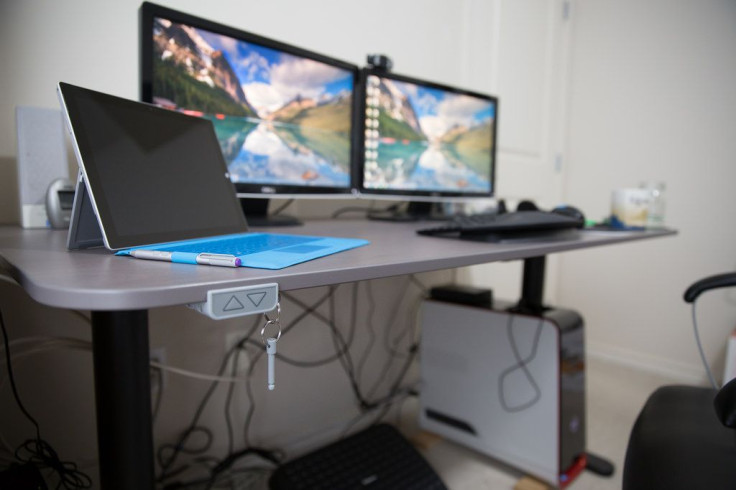A Standing Desk Reduces Sitting Time In The Office, But Employees Are Just As Sedentary Outside Of Work

The average American worker spends 65 to 75 percent of their workday sitting, which can lead to serious health complications, including obesity, diabetes, and cancer. Standing desks, also known as sit-to-stand work stations, were regarded as an easy solution to America’s sedentary problem, but some humans will do anything to stay lazy. A recent study conducted by researchers from Loughborough University has found that using sit-to-stand workstations does reduce the amount of time people sit while in the office, but they also increase the amount of time we spend sitting outside of the office.
“Our research sheds new light on how sedentary behavior and physical activity are compensated outside of working hours,” said Dr. Stacy Clemes, from Loughborough University's School of Sport, Exercise and Health Sciences, in a statement. “The findings suggest that sit-to-stand workstations are a promising alternative to the traditional desk and chair, and could lead to substantial health benefits in workers leading a sedentary lifestyle. Further research is needed, however, to examine the long-term use of sit-to-stand desks on combatting sedentary behavior and improving overall health.”
Clemes and her colleagues gave Ergotron sit-to-stand workstations to 40 men and women working in an office setting. All of the participants were fitted with a position sensor on their leg that they wore continuously for 24 hours a day for 14 days prior to the start of experiment and then for three months after receiving their sit-to-stand workstations. In addition to whether or not standing desks led to reductions in sitting at work, they also examined if this led to increases in sitting during leisure time.
Participants were able to reduce the amount of time they spent sitting at work by 20 percent — equal to a 96-minute reduction in sitting over the course of an eight-hour work day. Unfortunately, this led workers to be slightly more sedentary during non-working hours. Despite being more sedentary after work, sedentary time across the entire day decreased from an average of 10 hours, five minutes a day before workstation installation to nine hours, 21 minutes a day after the experiment.
"For those using sit-to-stand workstations, it is recommended that individuals consciously think about ways they can reduce their sitting time outside of work, so as to avoid undoing any beneficial effects of reduced sitting at work," Clemes added. "You can do this, for example, by adopting strategies at home such as standing up and walking around during TV advert breaks, standing when talking on the phone, and/or standing on public transport (if safe to do so)."
The research team called workers sitting less in the office and more outside of it the "compensation effect." A similar study conducted at Cornell University found a less expensive solution to sitting all day that is more suitable than standing all day, which evidence has shown may not be all that effective. The 30-minute sit-stand formula requires sitting for 20 minutes, standing for eight, and then moving around or stretching for two. If that’s too much for you, simply stand up and shake it out every 30 minutes. The only way to break out of a sedentary lifestyle is to keep it moving.
Source: Mansoubi M, Pearson N, Biddle S, Celemes S. The Using Sit-to-Stand Workstations in Offices: Is There a Compensation Effect? Med Sci Sports Exerc. 2015.



























